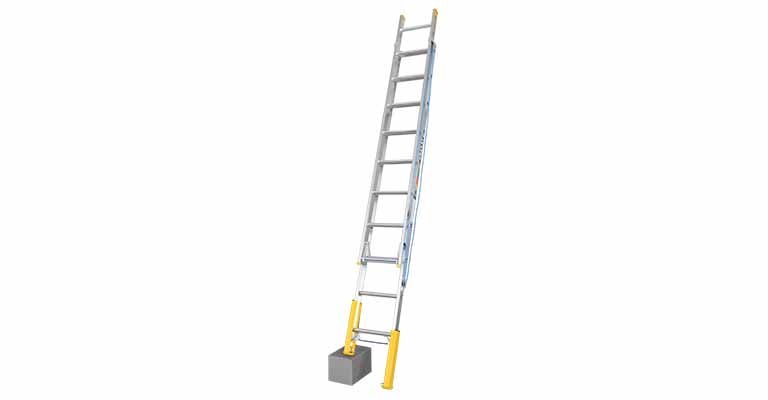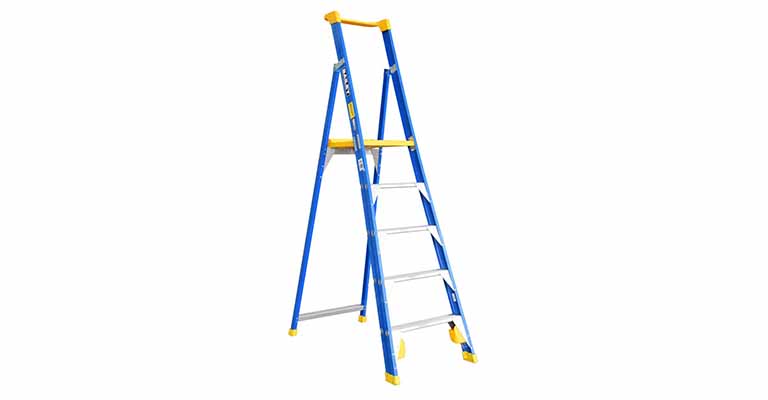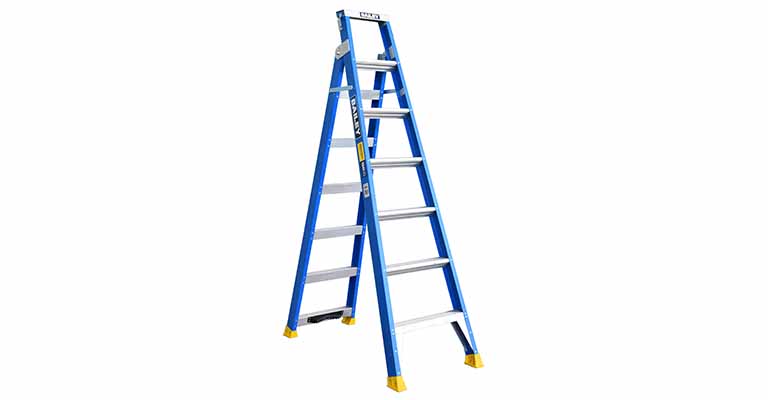Ladder Safety Tips
GENERAL SAFE USE AND CARE
• Ladders must be handled with care at all times.
• Observe the manufacturers' warnings and instructions.
• Observe closely the area in which you wish to position the ladder and assess for risks (e.g. open door ways, overhead power lines, uneven ground).
• Where a risk is present, remove (or reduced to an acceptable level) the risk, or seek an alternative safe means of access.
• Ladders are designed and built for a specific use. Read the warning labels and never use the ladder that is not recommended by the manufacturer.
• Choose the right type of ladder and the correct height for the task at hand.
• Always inspect the ladder for damage prior to use.
• NEVER USE A LADDER THAT HAS BEEN DAMAGED OR HAS MISSING PARTS.
• Always ensure the ladder is used on a firm level surface.
• Make sure each foot is in contact with the ground and the ladder is level.
• When climbing up or down the ladder you must face the ladder and maintain three points of contact.
• Never over reach as you may lose your balance.
• Do not use a metal ladder where an electrical hazard exists.
• Do not use a domestic rated ladder in the work place – this is a OH&S regulation.
• Do not climb from one ladder to another ladder. Climb down the ladder and reposition it as required.
• Never exceed the stated load rating of the ladder. This includes yourself and the tools and equipment you are carrying.
• Ensure the ladder is free from dirt, water and grease prior to use paying particular attention to the treads/rungs.
• When using a ladder near a door way, block/lock the door and/or post a guard.
• Do not leave ladders unattended while they are erected.
• Always wear fully enclosed footwear with slip resistance soles.
• Avoid using ladders in very wet or windy conditions.
• Never use a ladder if you are impaired by drugs, alcohol or sickness.
SAFE HANDLING PROCEDURES
• Never drop or jar a ladder as it may damage the ladder and make it unsafe to use.
• Always employ safe lifting practices when moving or handling ladders (e.g. bend the knees).
• Always be aware of others and property when carrying ladders. Particular care should be taken when carrying a ladder through or door way or around corners.
• Always ensure that you have full control of the ladder at all times.
• Be aware of the position of your hands when using ladders to avoid entrapment.
TRANSPORTING LADDERS
When transporting a ladder on a vehicle ensure that the following points are observed:
• The ladder is supported along its length to prevent sagging.
• The overhang beyond supports is equal and less than 1/3 of the length of the ladder.
• The ladder is securely tied down to prevent road shock and chaffing. Do not over tighten as this may damage the ladder.
• The upper surface of the roof racks or supports should be covered with soft material, such as rubber or pine, to decrease road shock.
• Do not transport a dual purpose ladder in the straight ladder position.





